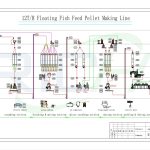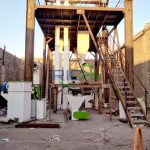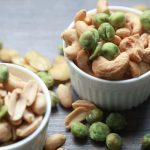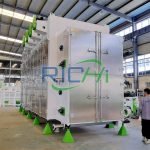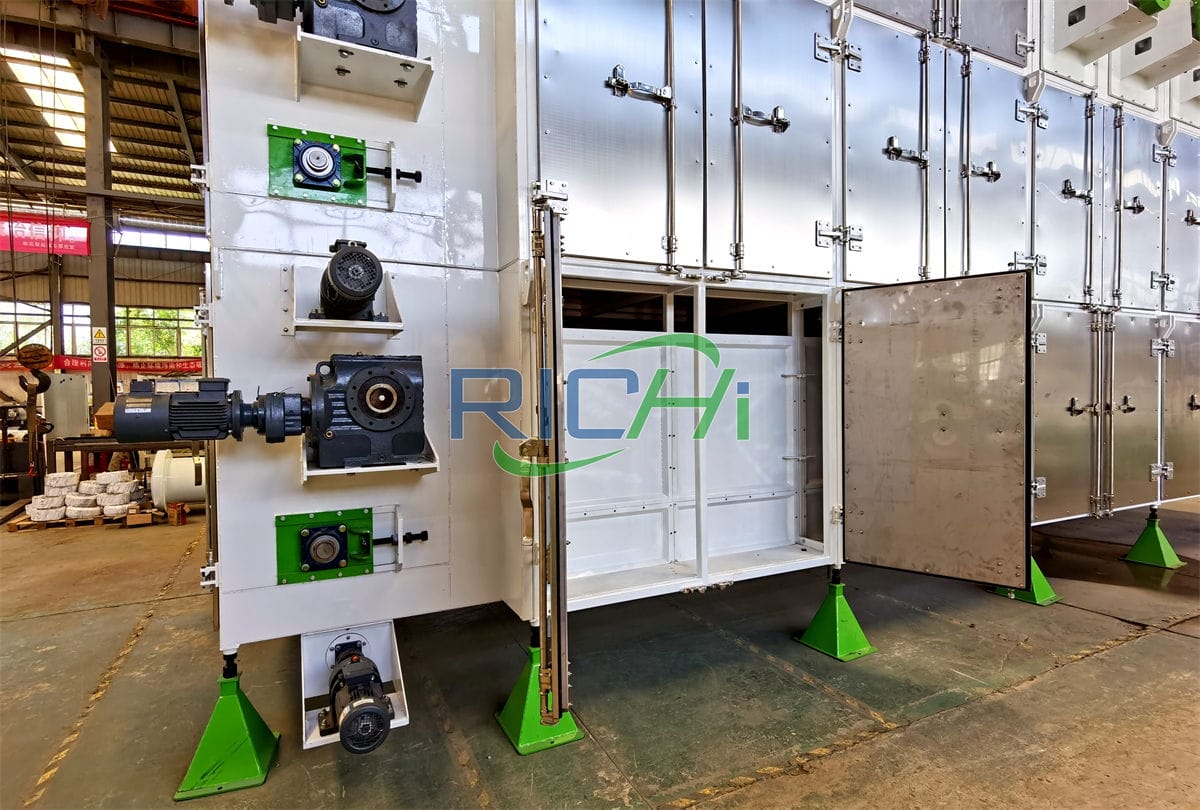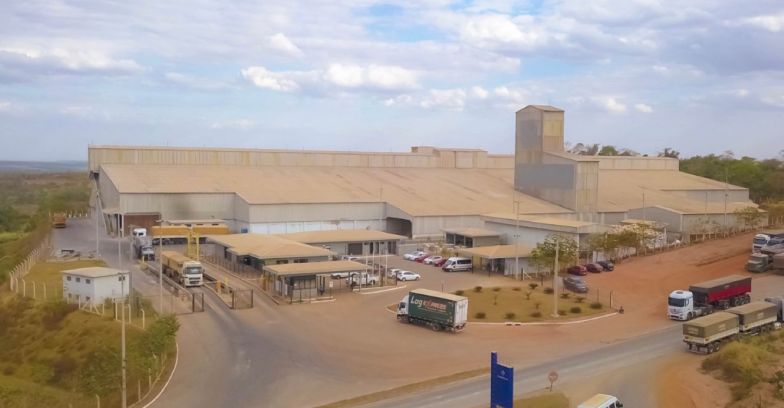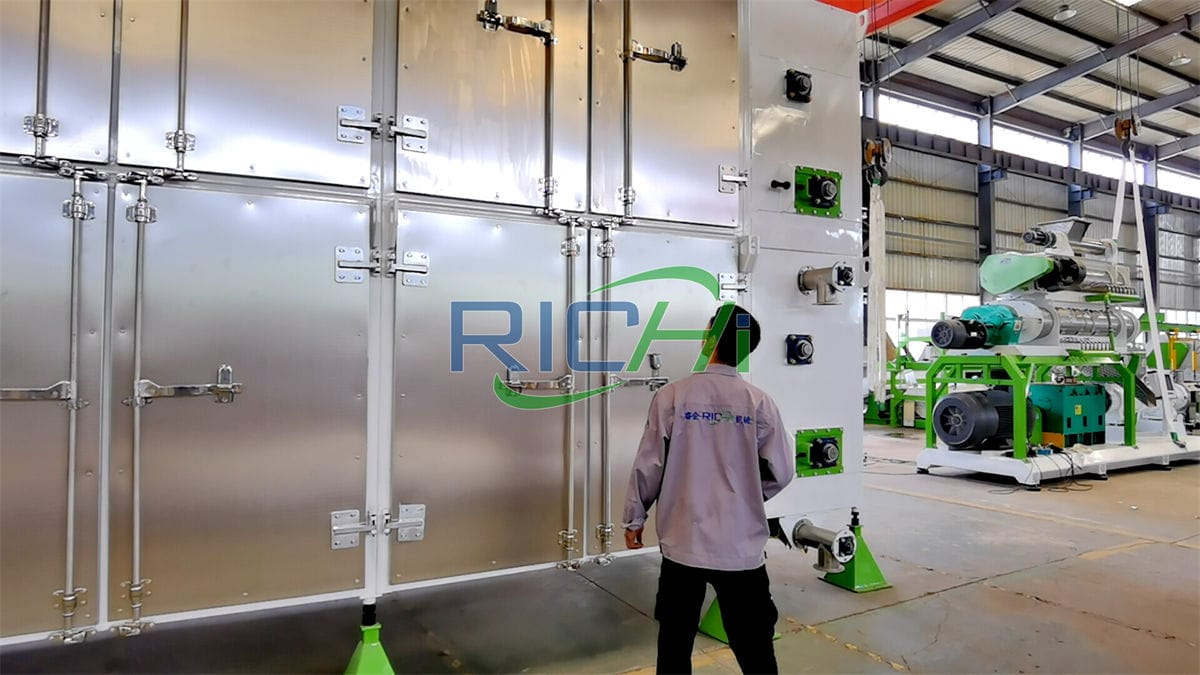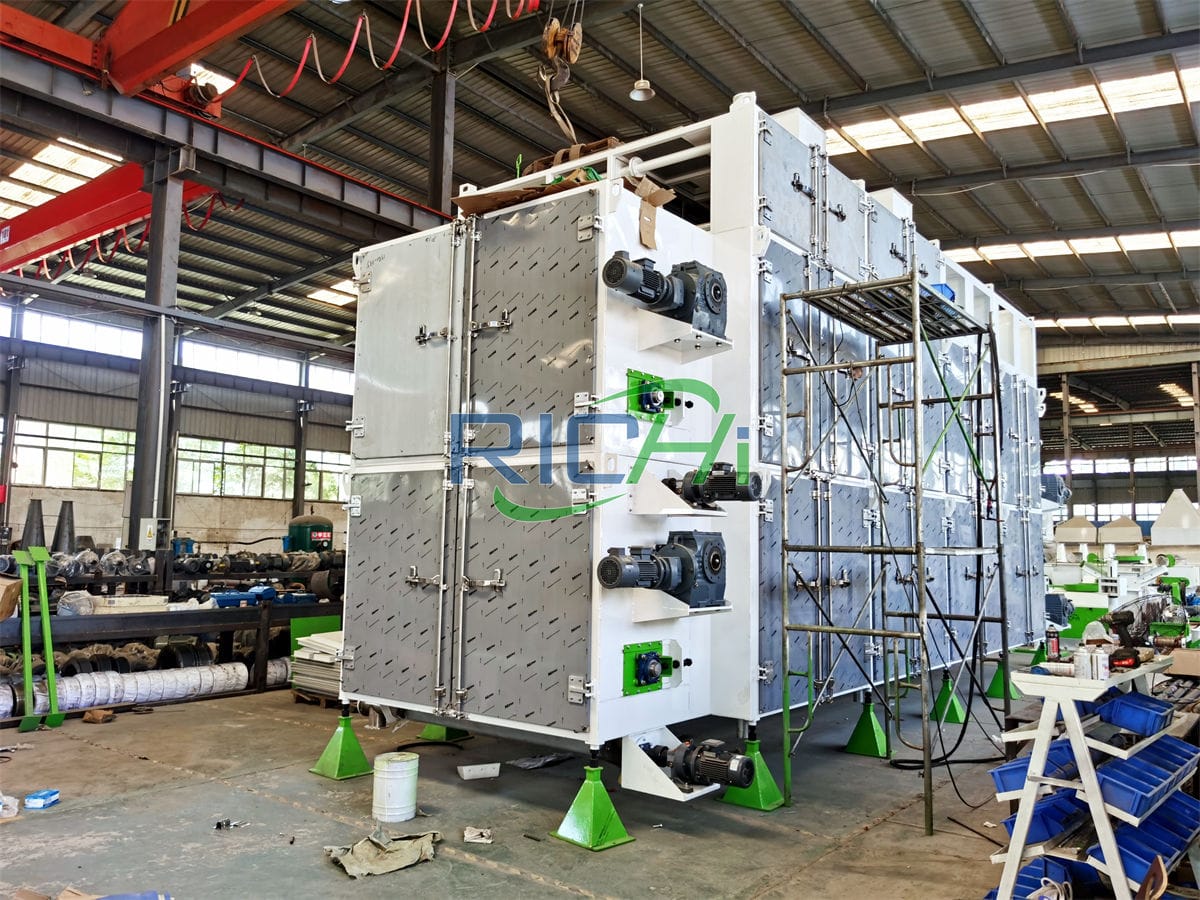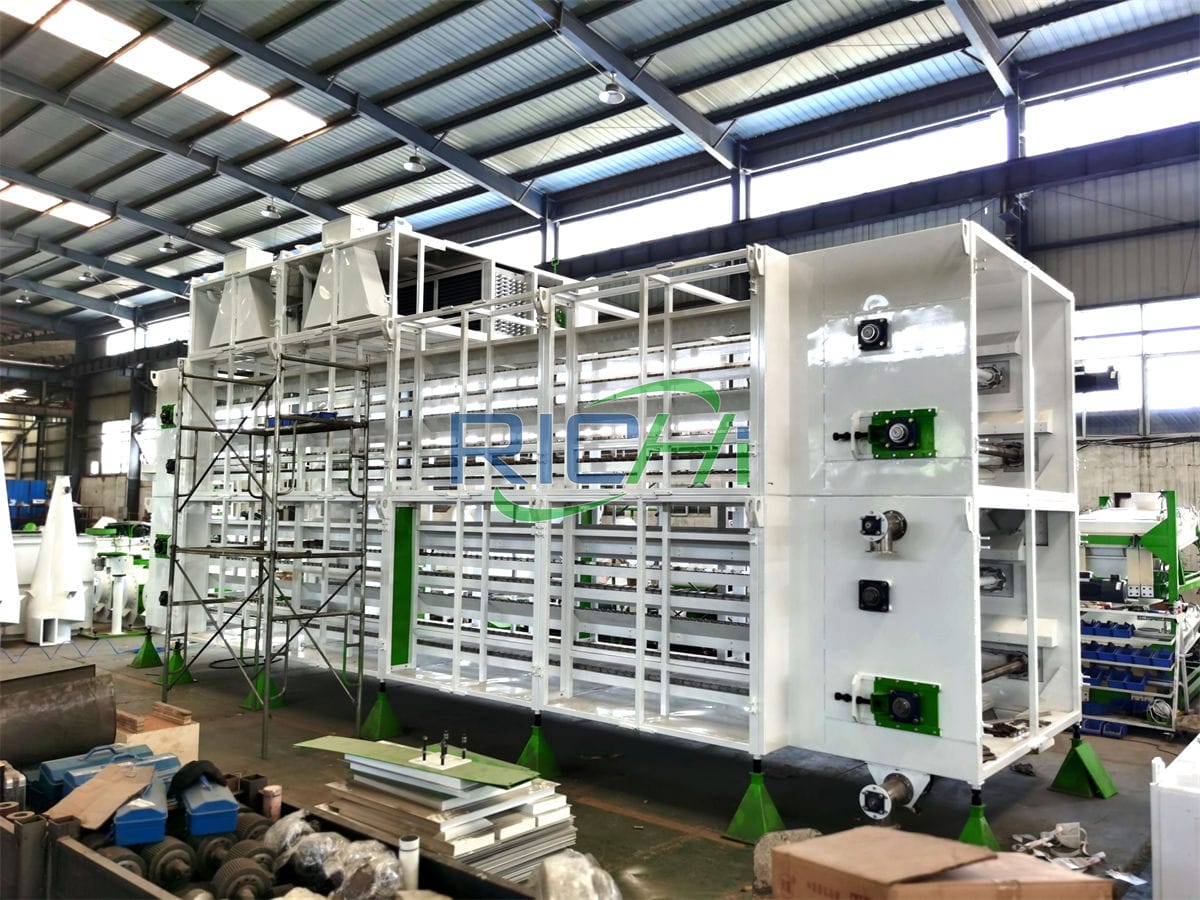In the ever-evolving landscape of animal agriculture, the demand for high-quality and nutritious feed has become paramount. As livestock and poultry operations strive to maximize productivity while ensuring animal health and welfare, the drying process plays a crucial role in preserving the quality and longevity of animal feed. Enter animal feed dryers, specialized equipment designed to remove moisture from feed ingredients and finished products, ensuring optimal quality, shelf life, and nutritional value.
The Significance of Animal Feed Drying
Drying is a critical process in animal feed manufacturing, as it plays a pivotal role in preserving the nutritional value, texture, and safety of the final product. The significance of animal feed drying extends beyond mere moisture removal, as it contributes to:
- Shelf Life Extension: Reducing the moisture content of animal feed inhibits the growth of microorganisms and prevents spoilage, thereby extending the product’s shelf life and ensuring long-term freshness.
- Nutrient Preservation: Proper drying techniques help to retain essential nutrients, such as proteins, vitamins, and minerals, ensuring that livestock and poultry receive the necessary nourishment for optimal growth and performance.
- Palatability and Digestibility: Drying plays a crucial role in achieving the desired texture and palatability of animal feed, improving feed intake and digestibility, which ultimately impacts animal productivity.
- Feed Safety: Effective drying reduces the risk of bacterial growth, mycotoxin formation, and contamination, contributing to the overall safety and quality of animal feed products.
- Packaging and Storage Efficiency: Dried animal feed products are more compact and lightweight, facilitating efficient packaging, transportation, and storage, ultimately reducing costs and environmental impact.
The Role of Animal Feed Dryers
Animal feed dryers are specialized equipment designed to remove moisture from feed ingredients and finished products in a controlled and efficient manner. These dryers play a crucial role in the animal feed manufacturing process, offering numerous benefits:
- Consistent Product Quality: Animal feed dryers ensure consistent moisture levels across batches, resulting in uniform product quality and minimizing variations in texture, shelf life, and nutritional value.
- Efficient Drying Process: Advanced animal feed dryers utilize various drying technologies, such as convection, conduction, or radiation, to efficiently remove moisture while preserving the integrity of the product.
- Temperature and Airflow Control: Precise control over temperature and airflow within the dryer allows for optimal drying conditions, preventing over-drying or under-drying, which can compromise product quality and nutrient retention.
- Energy Efficiency: Modern animal feed dryers are designed with energy-efficient features, such as heat recovery systems and optimized airflow patterns, reducing operational costs and minimizing environmental impact.
- Versatility: Animal feed dryers can accommodate a wide range of feed ingredients and formulations, including grains, oilseeds, protein sources, and complete feed mixes, catering to the diverse needs of the livestock and poultry industries.
- Scalability: Animal feed dryers are available in various sizes and capacities, allowing manufacturers to scale their operations according to production demands and market requirements.
Related post: https://www.richipelletmachine.com/pet-food-dryer/
Types of Animal Feed Dryers
The animal feed industry utilizes several types of dryers to meet the specific needs of different feed ingredients and manufacturing processes. Some of the most common types of animal feed dryers include:
- Convection Dryers: These dryers use heated air to remove moisture from feed products. Convection dryers can be further classified into batch dryers (e.g., tray dryers, cabinet dryers) or continuous dryers (e.g., tunnel dryers, belt dryers).
- Conduction Dryers: In conduction dryers, heat is transferred directly to the feed product through contact with a heated surface, such as a drum or a plate. Examples include drum dryers and vacuum dryers.
- Radiation Dryers: These dryers utilize electromagnetic radiation, such as infrared or microwave energy, to remove moisture from feed products. Radiation dryers offer rapid and efficient drying while minimizing product degradation.
- Fluidized Bed Dryers: In fluidized bed dryers, feed particles are suspended and agitated by a stream of hot air, allowing for efficient heat transfer and uniform drying.
- Ring Dryers: Ring dryers are commonly used for drying high-moisture feed ingredients, such as distillers’ grains or brewers’ spent grains. The feed material is continuously fed onto a rotating, heated ring for efficient drying.
Factors Influencing Animal Feed Dryer Selection and Performance
The selection and performance of animal feed dryers are influenced by several critical factors, including:
- Feed Ingredient Characteristics: The type of feed ingredient, its moisture content, and desired final characteristics (e.g., moisture level, nutrient retention) play a significant role in determining the appropriate dryer type and operating parameters.
- Production Capacity: The required production capacity and throughput rates are crucial considerations when selecting the size and configuration of an animal feed dryer, ensuring efficient and cost-effective operations.
- Energy Efficiency: The energy consumption and operating costs associated with different dryer types should be evaluated to optimize efficiency and minimize environmental impact.
- Quality Control and Monitoring: Effective quality control measures, such as in-line moisture monitoring and temperature control systems, are essential for ensuring consistent product quality and meeting regulatory standards.
- Maintenance and Sanitation: Animal feed dryers should be designed for easy maintenance and cleaning, adhering to strict hygiene and sanitation requirements to ensure feed safety and product integrity.
- Automation and Integration: The level of automation and integration with other processing equipment in the animal feed manufacturing line can influence the overall efficiency and productivity of the drying process.
Advancements and Future Outlook
The animal feed dryer industry is continuously evolving, driven by the need for increased efficiency, sustainability, and product innovation. Advancements in areas such as energy optimization, alternative drying technologies, and process control are shaping the future of animal feed drying:
- Energy-Efficient Drying Technologies: The development of energy-efficient drying technologies, such as heat pump dryers and advanced heat recovery systems, can significantly reduce energy consumption and operational costs while minimizing environmental impact.
- Alternative Drying Methods: Researchers are exploring alternative drying methods, such as supercritical fluid drying and ultrasound-assisted drying, which offer potential benefits in terms of product quality, nutrient retention, and energy efficiency.
- Intelligent Process Control: The integration of advanced process control systems, including real-time monitoring, predictive analytics, and machine learning algorithms, can optimize drying parameters, improve product consistency, and minimize waste.
- Sustainable Practices: The adoption of sustainable practices, such as the use of renewable energy sources and the incorporation of waste heat recovery systems, will become increasingly important in the animal feed dryer industry.
- Product Innovation: As the livestock and poultry industries continue to evolve, feed manufacturers will seek innovative drying solutions to accommodate new feed formulations, textures, and processing methods, catering to the diverse nutritional needs and production systems of various animal species.
In conclusion, animal feed dryers play a crucial role in ensuring the quality, safety, and longevity of livestock and poultry feed products. As the demand for high-quality animal-based proteins continues to rise, the importance of efficient and effective drying processes will become increasingly paramount. By investing in advanced animal feed dryers and embracing innovative drying technologies, manufacturers can contribute to the overall productivity and sustainability of the animal agriculture industry while promoting animal health and welfare.
For details please contact: Richi Pelletizer
WhatsApp:86 138 3838 9622
Email:enquiry@richipelletmachine.com


